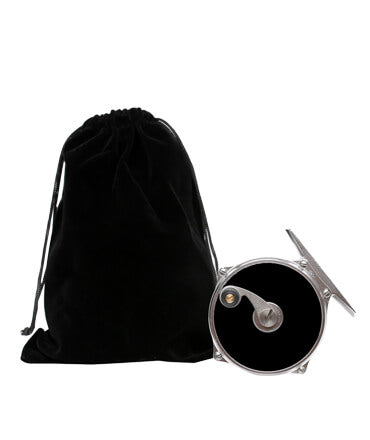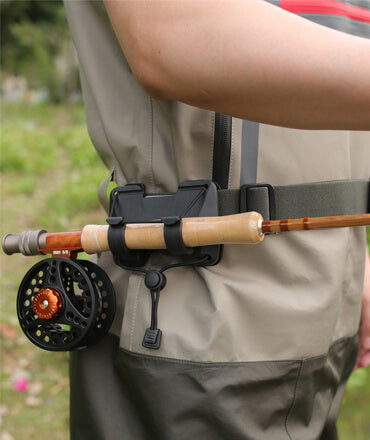Breathable Vs Neoprene Waders Explained!
In this guide, we have compared Breathable vs neoprene Waders in detail. Also provided the pros and cons of both neoprene and breathable waders.
Waders are waterproof, boot-like garments worn over the feet and legs to keep the wearer dry while wading in water. For accessing certain areas of water to hunt a distinctive fish, having waders on your body can take your fly fishing experience to the next level.
Owing to their efficacy and convenience, veteran fishermen, anglers, and waterfowl hunters who wade through water consider it a basic wading necessity to keep themselves dry.
Breathable and neoprene are the most popular kinds of waders, you’ll see in the mainstream market. Choosing one over the other is critical since each of these two has its purpose under certain circumstances.
If you, too, are planning to get yourself your first wader, better to learn this gadget to its fullest extent. So, let’s read on!
Neoprene Vs Breathable Waders: What’s The Difference?
With the emergence of breathable waders in the industry, they soon became strong contenders for Neoprene waders — old-fashioned waders used by hunters to date.
What Are Neoprene Waders
Quite self-explanatory, neoprene waders are made of neoprene, a characterized fabric used as a substitute for rubber. Being 100% waterproof, a neoprene wader keeps a hunter fully dry.
Not just that, but the small closed cells of neoprene trap the heat in and provide the user foolproof insulation when he’s in or around the water.
On the flip side, these closed cells don’t let sweat escape out of the wall of this material. Having said so, in hot weather neoprene waders can cause a bit of discomfort for not allowing your body its required breathability.
General Features Of Neoprene Waders
Overall, Neoprene waders remain on the heavier side and may restrict the angler’s mobility to some extent. Another glitch to neo’ waders is: they are hard to dry after getting wet and using them for consecutive fly fishing days is a pain unless you use a boot dryer for drying waders.
Further to this, taking off and putting on these waders is time-consuming.
Nevertheless, in cold regions like Alaska, Iceland, Canada, etc, where meltwater lakes are, neoprene waders flawlessly keep your legs warm.
What Are Breathable Waders
Similarly, manifested by the name, breathable waders provide your legs required breathability for making your aquatic hunts much more convenient.
Thankfully, by breathability, you don’t have to cut down on the waterproof characteristics of these waders. These waders, generally utilize Gore-Tex fabric which is touted to perform water resistant to its maximum.
As far as the execution of these waders is concerned, breathable waders don’t have any closed membrane to trap the heat inside the waders. Rather, the pores in the membrane of these waders work bi-directionally. These waders don’t let water pass through them while keeping your sweaty legs optimally dry.
General Features Of Breathable Waders
It is worth mentioning here that, regardless of which waders you’re going to put on, waders will cause your legs to sweat – an unpleasing feeling you’d probably want to ward off at any time.
Being breathable, these are more versatile as compared to neo’ waders. For warmer temperatures, they remain an unparalleled choice for fishermen.
To enhance the dynamics of breathable waders for duck hunting or fly fishing, you can add as many layers of thermal suits under your waders as you want.
This means the more cold temperature gets, the more layers you’ll require to keep yourself warmer. Luckily, being waterproof, these layers never get wet or don’t restrict your mobility either when you’re wading a lot. However. For layering them up, you would need to get yourself one size bigger waders to make them fit snuggly on your legs.
Unlike its aforementioned competitor, these are easier to put on and off. The cherry on the top, breathable waders bear welded seams that don’t get ruptured under demanding conditions. Whereas, rubber-like neoprene is prone to get punctured comparatively more often.
Waders: Neoprene Vs Breathable Comparison
Honestly speaking, comparing these two kinds of waders is quite unfair. Both work exceptionally in their own unique way.
Yet, to save your back, we have rounded up briefly the key differences between these two to decide on which is a better option for your wading expedition.
Neoprene Waders
Pros:
Better for cold water fishing
Lower pricing tag than breathable waders
Relatively warmer option
Waterproof and air resistant
Cons:
Heavier than breathable waders
Comparatively less versatile
Tends to puncture
Not ideal for hot duck or fish hunts
Most neoprene variants have breakable seams
Breathable Waders
Pros:
More versatile as they are lighter in weight
Cooler than neoprene ones.
Waterproof and more comfortable
More convenient to slide in and out
More durable, as they never get ripped when hit by thorns or other pricky substances
Cons:
Relatively exorbitant
Not ideal for cold-temperature fishing
Some Things To Look For When Buying Waders
That’s not all! There are other things you should know before shedding your bucks to get waders. Let’s explore them below:
How To Select Right Fit Waders
Whether you choose breathable waders or neoprene waders, ill-fitted waders would spoil your whole fishing experience. One size fits all formula– isn’t going to work for waders.
For example, too-fitted neoprene waders might fall seams when you’re trying to sit or climb. On the converse side, the breathable waders with a snug fit might not let you add layers of garments underneath the waders for providing you with more warmth.
This being, you need to determine the right fit for your waders. As a rule of thumb, always buy one size bigger waders than your regular size; be it neoprene or breathable waders. If you are a plus-size person, then we recommend one of the best waders for big guys.
Determining Weather Conditions
Likewise, you also need to pay more attention to the climate of your specific fishing location. In general, neoprene waders are insulators and provide you with more comfort when you’re angling. So in cooler temperatures or cold water, your fowl and duck hunts can become hassle-free by putting on a pair of Neoprene waders as they are considered the warmest waders.
Non Neoprene Waders Vs Neoprene
At the same time, you shouldn’t confuse neoprene waders with non-neoprene waders. PVC, nylon, and breathable are the most typical non-neoprene waders.
So far, you have acquired a decent knowledge of breathable waders. Speaking of PVC waders vs neoprene, let’s tell you that these are non-neoprene waders. PVC waders are relatively less durable and cheaper than neoprene. If you’re running short on money and looking for warm waders, these are a good choice. Yet, bear in mind, neoprene waders remain an ultimate choice to save hypothermia.Lastly, I would recommend you store your waders in a wader bag to keep them away from grim and dirt and increase their lifespan.
FAQs:
We have explained neoprene vs neoprene waders in detail. If you want to enjoy the most genuine fly fishing experience while wading, then breathable waders are going to be the real bang for your buck. Luckily, you won’t have to break your funds to get yourself a nice set of breathable waders.
Waders are typically made from durable, breathable materials such as rubber or neoprene, and are designed to provide a snug, comfortable fit. Waders are commonly used by fishermen, hunters, and other outdoor enthusiasts who need to wade through water in order to access certain areas or fish for certain species. They are an essential item for anyone who spends time in or around water and are widely used due to their effectiveness and convenience.
However, each fly fisherman has his personal preferences and should choose waders that meet his requirements the most.
Related Fly Fishing Guides:
Wading Boots Guides:
Best Wading Boots 2023 (Wader Boots Reviews)
Best Wading Boots 2023
Best Wading Boots Insole 2023
Korkers Wading Boots Review
Studded Wading Boots Guide (Studs Installation and Placement)
How to Size Wading Boots? 5 Tips For Sizing Wading Boots
What are Wading Boots? Buying Guide!
Felt Sole Wading Boots
Best Wet Wading Shoes For Fly Fishing
Best Lightweight Wading Boots
Best Wading Boots For Women
Best Budget Wading Boots
Felt Sole Wading Boots
Drying Wading Boots? In 6 Interesting Ways!
Best Wading Boots for Slippery Rocks
Ultimate Guides on Waders:
Best Waders For Fly Fishing
Best Women Waders
Wading Pants Reviews
Best Wading Jacket
Best Hip Waders
Best Neoprene Waders
Best Waders for Cold Water (Winter Fly Fishing)
Best Wader Bags
Best Wading Staff
What to Wear Under Waders?
Breathable Vs Neoprene Waders Explained
Waders for Big Guys (Tall Fat Guys With Big Bellies)
Kylebooker Fly Fishing Catalog 2023











